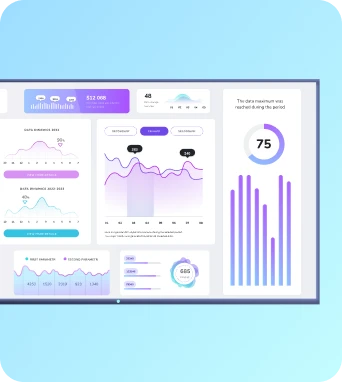Adaptive streaming
Adaptive streaming is a delivery method that changes video bitrate and resolution in real time to match current network bandwidth and device capability. It divides content into short segments encoded at multiple qualities so players can switch between streams to prevent buffering and keep playback continuous on signage displays.
Adaptive streaming
How adaptive streaming works
Adaptive streaming relies on two main components: multi-bitrate encodes and a client-side logic that selects which encoded segment to request. During content preparation, a source video is transcoded into several quality levels—an encoding ladder that might include low-resolution, medium-resolution and high-resolution renditions at different bitrates. The encoder slices each rendition into short time segments, typically a few seconds each, and generates a manifest file that describes available bitrates and segment locations. When a display player requests content, it downloads the manifest first and then fetches individual segments. The player continuously monitors download throughput, buffer occupancy and playback performance and uses that telemetry to choose the next segment quality. If bandwidth improves the player will request a higher-bitrate segment at the next segment boundary; if conditions worsen it drops to a lower-bitrate segment to avoid rebuffering. This decision loop happens frequently, so transitions are rapid and generally unobtrusive.
Two dominant protocol families implement this behaviour: HTTP Live Streaming (HLS) and MPEG-DASH. HLS is common on Apple platforms and many media servers, while DASH is an industry standard with broad support among players and CDNs. Both use HTTP delivery, which allows standard CDN caching and easy integration with existing web infrastructure. For signage networks, the result is robust playback across varied network links and device classes without requiring per-device manual tuning.
Best practices for signage networks
Designing an adaptive streaming workflow for a signage network requires attention to encoding, CDN configuration and player settings. Start by defining an encoding ladder that matches the range of device resolutions and typical network conditions in your estate; include a low-bitrate fallback so displays on constrained links maintain continuous playback. Use keyframe-aligned segmentation and consistent segment durations to minimise switching artefacts, and consider shorter segments for faster bitrate adaptation or longer segments to reduce overhead and HTTP requests. When using a CDN, ensure origin and edge caching rules align with manifest and segment lifecycles; long-lived segments reduce origin load but can delay updates, so balance cache TTLs with how often your content changes.
On the player side, configure buffer target sizes and initial bitrate policies to suit your environment: a larger startup buffer can prevent early stalls on variable links, while conservative initial bitrate choices avoid unnecessary resolution drops. Instrument players to report throughput, buffer levels and error events so you can monitor performance across locations and detect problematic networks or hardware. For poorly connected sites, provide an offline fallback by preloading critical assets or switching to locally cached playlists. Finally, test across representative devices and networks before wide deployment to validate that your adaptive profile delivers acceptable quality and resilience on real-world signage hardware.
Implementation tips and troubleshooting
Keep the learning going...
Adaptive brightness
Adaptive brightness is a display feature that automatically adjusts screen luminance in response to ambient light, content and schedules. On digital signage and TV dashboards it optimises readability, reduces power consumption and helps extend panel lifetime by avoiding excessive brightness while supporting night modes and viewer comfort.
Adaptive content rendering
Adaptive content rendering is a technique for digital signage that dynamically modifies media presentation based on screen size, orientation, network bandwidth and contextual signals such as time, location and audience. It ensures legibility, consistent branding and efficient use of resources by choosing appropriate layouts, resolutions, codecs and fallback assets for each display.
Advanced signage analytics
Advanced signage analytics is the practice of collecting, correlating and interpreting playback metrics, viewer counts, interaction events and environmental signals from digital displays to quantify engagement, measure campaign effectiveness and drive automated scheduling, content personalisation and device maintenance across signage networks.



